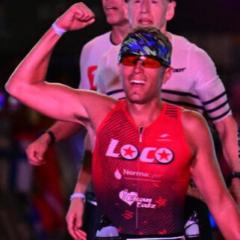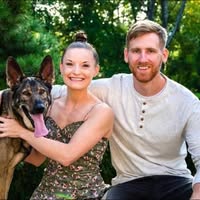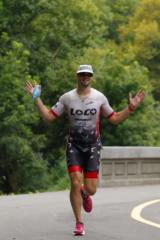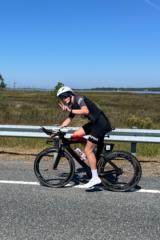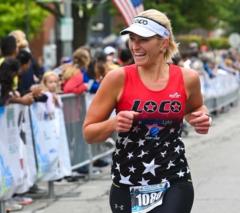Sep 24 (edited) • Race Results!
IronMan World Championship: Nice race recap
Now that I’m on this platform, I figured I’d share a race recap from the IronMan World Championship in Nice on Sept. 14, which I qualified for earlier this summer at IM Lake Placid.
WARNING: Super long post based on another one I already wrote during a 10-hour flight.
--------------------------------------
I woke up the morning after IronMan Lake Placid in July feeling pretty good about things. I managed a sub-12-hours time on one of the most legendary courses there are, and that was despite steady rain on a bike that climbed over 7,000 feet followed by a battle with my gut on the run. I placed 42nd out of 195 – not the stuff of legends, but it was hard-earned and I was damned proud of it.
And I was hungry. That’s what happens when you burn something like 11,000 calories in a day.
I was sticking around an extra day to recover, so I headed over to the awards breakfast to take advantage of the all-you-can eat offerings. I stuffed myself full with a bowl of oatmeal, some blueberries, yogurt, a bagel, a banana, a muffin, scrambled eggs, sausage, bacon, another bagel, and an egg sandwich—all while giving my unsolicited insights and advice to a very friendly fellow athlete who later turned out to be previous year winner Trevor Foley—then waddled over to the seats near the awards podium.
They started reading off all the slots for the women’s World Championship in Kona, Hawaii. It’s Kona, so they got snatched immediately. For the men, it was a Nice, France year, so that’s a different situation. The director preempted things by saying “If you want to go, you’ll probably get to go.” It's nothing against Nice, but it's not Kona with its legacy, so people don't want to go.
I was soloing this race because my wife’s a teacher and the school year was just about to start, so I started feverishly texting her.
ME: I think I have a legit shot at going to Worlds.
HER: Is that the one in Hawaii?
ME: No. This one’s in France.
HER: I like France.
ME: It’ll mean you have to take off several days from work to go.
HER: I have the days. I like France.
ME: It’s a lot of money.
HER: I like France.
ME: That means I have to start training for another IronMan right away.
HER: YOU have to train for an IronMan. I like France.
They got to my age group, and sure enough, it was an easy slot. There were 11 total and only eight of us were at the breakfast to claim them.
I grabbed my qualifier’s coin and certificate, dolled out way too much money to register, then trotted off on my merry way. Reality set in about an hour later when I realized I had seven weeks to recover and retrain for another full IronMan while also coordinating a trip to Europe (all while work was being extra special obnoxious and demanding). Also, I only placed 42nd and took a slot that generally is meant for people in the top five, maby 10 finishers, of each age group. So I developed a pretty severe case of imposter syndrome.
I had a solid 12-hour car ride home the next couple of days to stew on everything and figure out what I wanted to do. It was a once in a lifetime opportunity, and regardless of my time falling into the pretty-good-but-not-great category, I worked my ass off to get that far, so hell yes I was going to France! Plus, it seemed like my wife likes it.
NICE
Nice is on the Mediterranean Sea, just a short train ride from Monaco and Italy right beyond that. The city is a genuine melting pot of Mediterranean cultures, with just as much influence from Italy, Spain, Portugal, Greece, and Turkey as France.
In the days leading up to the race, we explored cobblestone alleyways housing shops and restaurants overlooking centuries-old cathedrals, cliffsides along serene waterfronts, ancient ruins where gladiators fought to the death that lived in the shadows of a Benedictine monastery still in practical use today. The list goes on.
And the food. When you need to carbo-load, go to a city near Italy. Enough said on that front.
But I had to work too. And come raceday, I did more than I ever had before.
THE SWIM
The morning started with one of triathletes’ least-favorite notifications: “Wetsuits are NOT allowed.” The cut-off temperature for IronMan races is 76.1 degrees Fahrenheit, and the official reading that morning was 77.5.
It was definitely too warm for comfort to wear a wetsuit, but it also meant losing all of the buoyancy from the neoprene, which is an easy 10 seconds off my 100-meter pace—enough to cost several minutes over 2.4 miles of swimming. That only amplified the fact that this race was in the Mediterranean Sea, not one of the small, calm inland lakes around the Midwest. But the Mediterranean is also one of the saltiest bodies of water on earth. That salinity added enough buoyancy you could actually feel a discernible difference in the water’s consistency, almost viscous. And holy crap could you taste the salt and feel it on your skin afterward.
This was also one of very few times I did a “deep-water start.” Instead of us steadily walking across a sensor mat three at a time at the beginning to trigger the start of our races, each age group swam out 25 meters and treaded for a minute or two before a horn blew. It was like the bell at the beginning of the Royal Rumble the way we were throwing fists and body slamming each other those first few minutes.
After the initial chaos, I got into my groove and felt my watch buzz. I took a glance when I could and saw I was clipping right along at a nice 1:45 per 100 yard pace—definitely a lot better than I anticipated in those circumstances. I figured it was just my race-start adrenaline and that I needed to slow down to pace myself, so I settled into what felt natural. Sure enough, I kept moving right along at about that speed, and I was able to keep doing so.
The one hang-up I encountered was that my goggles’ left lens didn’t seal 100%. Just a little bit of water squeezed itself in there, but with the saltiness of that water, after about 45 minutes, it felt like I had acid in my eye, so I broke down and treaded water for a few seconds to fix the issue.
The sighting was also supposed to be a bigger challenge with this course. Normally, buoys are spaced a pretty even 100 meters apart, but at this one, they were more than 200 meters from each other. The reason being is that the water gets too deep, with the bottom getting as far below as 300 meters, or nearly 1,000 feet. That is a lot of room for things with teeth. Best not to think about it when you’re swimming a kilometer off shore on another continent. But no hungry sharks, no agitated barracudas, no amorous dolphins.
What really struck me throughout the whole swim was how much that water was BLUE. I don’t mean the kind of blue when you see the ocean or a Great Lake from a distance, but then you get in the water and realize, “oh, gee, this is actually pretty brown up front.” It was like something out of a cartoon. Just impossibly freaking blue.
THE BIKE
Holy shit.
Nice’s bike course is legendary for being one of the toughest in the world. We climbed more than 8,000 total feet over 112 miles, including one incline of 3,000 feet over 12 miles that took over an hour to do. You go up, up, up, the first third, roll through more hills the middle third, then DOWN back into Nice.
I figured, hey, Lake Placid was 7,000 feet through the Adirondacks, and I did pretty decent on that one, so what’s another 1,000 feet through the Alpes-Martimes?
*Non, monsieur, vous êtes très stupide.*
More so, this race is known for how incredibly difficult the handling is on the descent because of the sharp curves and hairpin turns winding down from the mountains. I mean, I train in central Indiana, where the roads are flat as a board and straight as an arrow. I can work on making my legs more powerful for long climbs, but there was absolutely nothing to do to truly get ready for what awaited me on the last portion of this event.
I got out of the water and took a couple of extra minutes to rinse off the salt to avoid burns later in the day. I hopped on my bike, but my hamstrings were a little tighter than I wanted because of the extra kicking on the swim from not having a wetsuit to help me. I took it easy the first few, flat miles leading out of town.
Then as soon as we got to the city’s edge, bam! A 1,000-foot climb. There was still quite a bit of athlete congestion on the course at that point because of how early on we were into the bike, so the hardest part was actually navigating around the other men as we hoisted ourselves up this first big hill.
I got to the top, and the climb actually helped unkink my legs pretty effectively. The route then descended about halfway back down. There were some relatively stiff curves throughout, but I was able to hold my form pretty well going through these and keep my power up. “Psh! If that’s how tricky these descents get, then all that talk about the technical difficulty seems pretty over-hyped,” I convinced myself.
*Encore une fois, monsieur, vous êtes vraiment très stupide.*
As soon as we reached the base of the first descent, we immediately shifted right back up.
And this was the big one. It was 3,000 feet over 12 miles of continuously climbing over an average grade of 6%, with the roads getting as steep as 12% over one mile.
I hauled myself through some of the most gorgeous settings anywhere on this planet, hands down–and I cannot stress to you enough how much I did not give a flying f–k. My eyes were laser-focused on the course.
The last mile of the big climb ends with the hardest stretch, where you crawl up and around a curve only to be met with the sight of a large rockface. As I looked ahead, I saw three switchbacks, with hundreds of cyclists trudging up this monstrosity of a mountain very, very slowly. I actually did quite well for myself there, pushing ahead of a lot of other cyclists. And I’ll note here that I did this on an 11-30 cassette with a 1.2 front-to-back gear ratio – NOT ideal for this terrain.
At the top, I was greeted by a sign that simply announced “Bravo!” before tipping the front of my wheels down into a nice rolling area of farmland. “Aha! This is like back home. I know THIS. This is my turf now. Time for me to really pull ahead and regain some lost time.”
*Monsieur... stupide, stupide, stupide, vraiment stupide.*
Headwind.
As soon as I got to the one stretch I had a chance to put myself into a groove, the wind met me. It wasn’t terrible, just enough to piss me off as I watched my speed continue to falter relative to the power I was putting in.
I arrived at a village a few miles later, at which point I did the single stupidest thing I’ve ever done in my racing career: I missed the personal-needs station.
For the uninitiated, at every full IronMan event, you’re allowed to drop off two bags the morning of the race: one for the bike and one for the run. You put whatever you want in them, and then you grab them at the halfway point of those events so that you can resupply, give yourself a treat to keep you motivated, or whatever you need to keep yourself going. In my case, it was additional nutrition and hydration (read: fancy terms for Fig Newtons and Gatorade), as well as a lovely little croissant I had picked up at the patisserie a block from our hotel. Bon Apetit! The personal needs station is usually punch-in-the-face obvious with multiple signs and people shouting all right on the road–at least in America. But in this case, there was a quiet collection of volunteers you were meant to veer off course toward who were subtly going about their business as if tending to their gardens. I started to make the turn left when I noticed all the other athletes forking right. “Oh!,” I quickly convince myself, “I guess this is where we do that out-and-back, and we must come back through here on the return.”
*Non!*
It took about 2 minutes for me to realize I made a big, big mistake. It wasn’t catastrophic in that I could live off the course, grabbing bananas, energy bars, water, and other needs at the aid stations every 15 miles or so. But as anyone who has done a full IronMan knows, changing up your nutrition plan is a huge gamble—the kind that can have you spending a whole lot of extra time on the toilet.
Luckily, my stomach behaved, and if anything, it felt better after switching to whole foods. I guess my nearly 40-year-old stomach doesn’t have the same tolerance for six hours of consuming cookies and sports drinks like it used to.
I pressed on to the final stretch of the course: the descent.
This section is broken down into an additional three parts, starting with “The Descent of False Hope.” I shot down hills that were steep enough to let me hold well over 30 mph. Not exactly a record pace but definitely a good pick-up. There were plenty of tight curves, but nothing too terrible. Nevertheless, there were a fair number of men who were able to overtake me on this section. It was becoming pretty clear who lived near mountains and who didn’t. Some of these athletes were blasting full tilt around bends narrower than 90 degrees while I was feathering my brakes the whole time.
After a few miles, we then hit another big climb, this one being about 1,000 feet over six miles. Unlike the first two big climbs at the beginning, this one greeted us after we had about 90 miles in our legs. Sucky.
Near the top, I took an additional break at an aid station to refill my bottles with both feet on the ground versus grabbing in motion on the hills like I normally do. If there was one thing I saw way too much of at that point, it was dropped bottles. All the villages we passed through are laden with speed bumps right at the bottom of the hills as you enter their town limits. These are both effective at causing motorists to slow down before residential areas and at jarring flimsy disposable water bottles loose from their cages so they can catch under bicycle wheels and send their occupants flying over the handlebars. So I stopped at the station to refill my own bottles, knowing full well I wasn’t going to be making any sort of impressive time anyway, and resupplied.
I also discovered at this stop that senior madams really don’t like it when you chuck garbage on the ground. I was handed a banana, and as is common to do in the litter-legal areas at aid stations, I peeled my fruit and tossed the peel on the ground.
“Non, non, non, NOOON… Bah!”
Oops. Désolée.
Or in Midwestern: Ope.
I got back on for the final stretch, and this is where the real work began. The third and final portion of the descent features continuous steep grades around sharp turns on narrow roads.
This section was marketed as the “fun” portion, at least for those with the experience to use these hills to recover their lost time climbing into the Alps. But I went into this race planning a conservative strategy for this portion. I have zero real-world experience with this kind of riding—again, I live in central Indiana—and I was there to complete, not compete in this race. I had no intention of pushing my pace going down these hills that were world-renowned for their technical difficulty—and danger. As I got into the hardest of the hard part, any false confidence I developed at the beginning of the ride evaporated. I was gripping my bike’s bullhorns so tensely that what ached more than anything nearing the end of a 112-mile bike ride through the mountains was my arms.
I wager I saw at least 10 bike wrecks during this race, including one man another athlete and I stopped to help. I came around a bend and saw a bike in the road, and when I looked ahead, the man had fallen, rolled, and slid under the guardrail. He was holding onto the grass, trying to pull himself back up to the road before rolling down the hill as the other man was reaching out to grab him and pull him back up. By the time I stopped and got over there, the injured man was back up on the road, shaken and covered in road rash, but nothing was broken on himself or his bike, so he committed to getting back on and going. But mentally, that was it for me on those hills. I coasted the last few miles.
Never have I been so glad to be done with a bike leg before. My final time for the bike leg was downright pathetic, but I got it done.
THE RUN
I lost a few minutes getting through T2. This race didn’t have bike catchers to take your bikes from you like at other IronMan events, leaving you to rack your own bike in your assigned spot. But when I got to mine, someone had taken it. Serves me right for being so slow on the bike, I guess.
After spending an extra minute or two searching for a volunteer to help, I was out on the run course.
This was in town along the coastline on what is known as the Promenade des Anglais. Everyone described it as “flat, warm, and windy.”
The temperatures had picked up well into the 80s, and the wind was definitely noticeable after I got back down from the mountains. This actually seemed to help a little in my case. I was still pretty well acclimated to the heat from the hot summer we had, so the temperature wasn’t too noticeable. And with the course being four laps out and back, running three miles one way with a helpful tailwind into the heat balanced nicely with the slower, but cooling headwind on the way back each time. So for the whole 26.2 miles, it was a half hour in one condition, then a half hour the opposite.
The run was otherwise pretty uneventful, other than I DID manage to stop at the personal needs station on this leg, then promptly dropped my croissant in the toilet.
THE FINISHLINE
I crossed the finishline with an overall time of 12:36:27, ranking 251 out of 327 in my age group and 1,529th out of 2,316. Obviously, this wasn’t a legendary performance, and I harbored no delusions I stood a chance.
I was only six minutes off my target time of 12:30:00, which given the additional stops in predominantly unfavorable weather conditions, I’ll gladly take it.
Despite an unstellar bike leg, I had a strong swim without a wetsuit in the ocean, and I set a personal record by four minutes on a hot and windy run at a race where 25% of the professional athletes did not manage to finish.
No matter how I did out there, I crossed the finish line at the IronMan World Championships.
5
2 comments
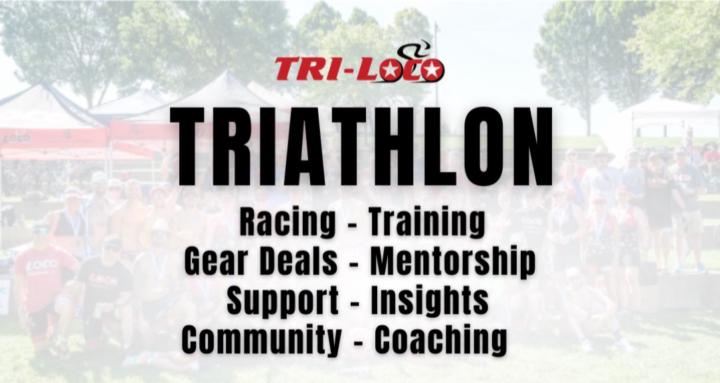
skool.com/triathlon
A national community of Triathletes, and multi-sport athletes of all kinds, supporting each other, racing hard, and having fun!
Powered by
